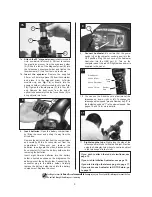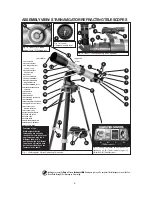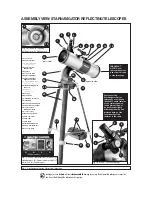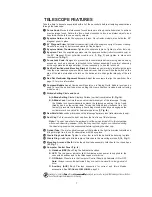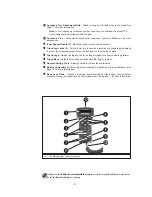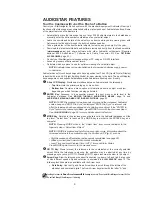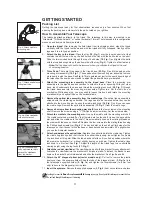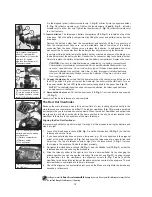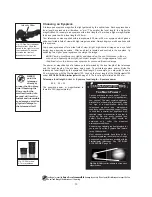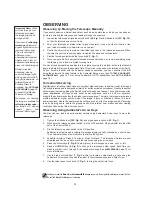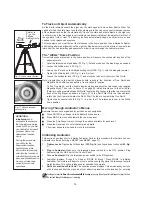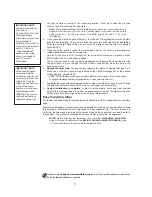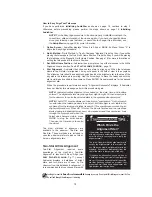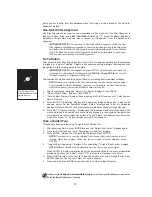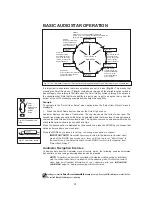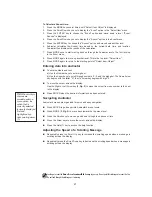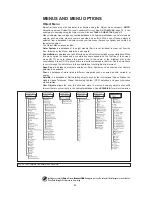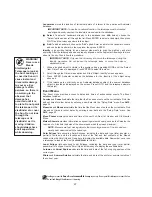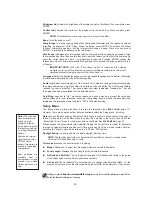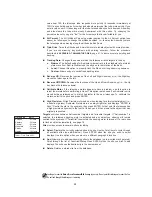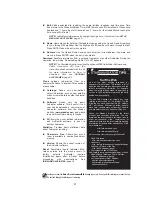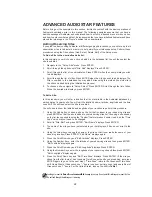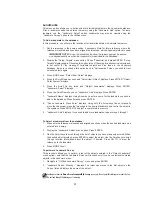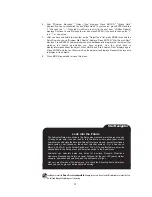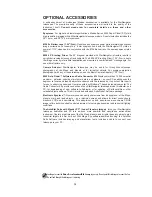
17
the city and state or country of your observing location). Press Up to select the zip code
option or down to enter the city and state.
Note: The location settings (country/state/province and city, or zip code) are only
asked for the first time you turn on the control panel. If you wish to change this
setting later on, use the Site menu. See
SITE
, pages 26 and 27, for more
information.
a.
If you chose the zip code option (USA only), the leftmost “0” is highlighted. Use the Number
keys to enter the digits. As you enter a digit, the next digit to the right will be highlighted.
Enter the next digit. Repeat this process until all 5 digits of your zip code are entered.
Press ENTER.
b.
If you chose the location option, the next screen asks for the country or state/province
(listed alphabetically) of the observing site.
Use the Scroll keys to scroll through the list of countries, states, and provinces. Press
ENTER when the correct location displays.
The next screen asks for the city (listed alphabetically) closest to the observing site. Use
the Scroll keys to scroll through the list of cities. Press ENTER when the correct city
appears on screen.
6.
Daylight Savings Time: The next screen requests the status of Daylight Savings Time.
Press one of the Scroll keys to toggle between the YES/NO settings. When the desired
setting displays, press ENTER.
NOTE:
When multiple choices are available within a menu option, the current option
is usually displayed first and highlighted by a right pointing Arrow (>).
7.
AudioStar then requests the telescope model number. Use the Scroll keys to cycle through
the database of models. Press ENTER when your model number displays.
9.
System initialization is complete. In order to automatically locate and track celestial
objects, the telescope needs to perfrom an alignment procedure on the night sky. See the
section Easy (Two-Star) Align below on performing this procedure.
Easy (Two-Star) Align
The fastest and easiest way to locate objects with Audiostar's GO TO capabilities is to use Easy
Align.
Audiostar automatically picks two stars from its database for the Easy Align procedure. During
this procedure, Audiostar slews the telescope to a first alignment star. The user is asked to
verify that the telescope is pointed at the chosen star and then prompted to centre the star in
the eyepiece. The process is repeated with a second star to complete the alignment.
NOTE: Before aligning the telescope, first verify that
INITIALIZING AUDIOSTAR
,
page 16, has been performed. See
MOVING THROUGH AUDIOSTAR’S MENUS
, page
16, if you wish to learn how to operate Audiostar’s keys.
IMPORTANT NOTE:
While performing the
automatic tracking
procedure, only use the
Arrow keys to move the
telescope. Once the
telescope has been set
in the Alt/Az home
position, do not loosen
the telescope locks
(10F, Fig. 1b), or move
the base manually, or
alignment will be lost.
IMPORTANT NOTE:
Audiostar requests the
Zip Code or
Country/State, City, and
Telescope Model
information only the first
time Audiostar is
activated. If you wish to
change this information,
use the "Site" and
"Telescope Model"
options in the Setup
menu. See pages 26
and 27 for more
information.
Looking at or near the
Sun
will cause
irreversible
damage to your eye. Do not point this telescope at or near the Sun.
Do not look through the telescope as it is moving.

